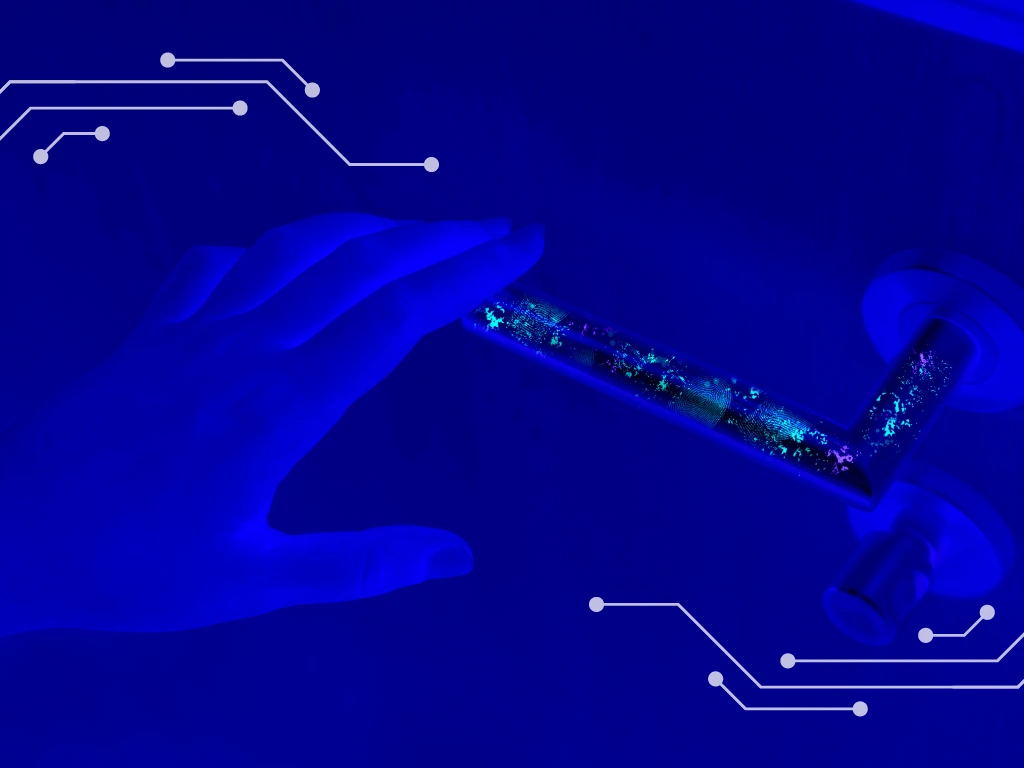Whether you are in the healthcare industry or are interested in the spread of viral infections, it's essential to stay informed on current and future Healthcare Associated Infection (HAI) reducing technologies. With studies indicating that 1 in 31 hospital patients contract a HAI from their stay, it is more important than ever to be knowledgeable about this issue and take steps to protect your area.
A Shift to Continuous, Whole-Hospital Solutions
Healthcare’s focus on patient well-being has translated to a targeting of patient rooms alone. Since terminal cleaning of these rooms is inadequate, it requires solutions that either operate continuously in occupied rooms or remain active in the environment once the solution is applied.
However, every healthcare worker knows that pathogens can come from people and surfaces throughout the entire hospital. Today’s thought leaders are calling us to look outside of patient rooms as well. This will not only improve outcomes for our patients, but also for the healthcare workers who have an elevated risk of exposure. The solutions of the future must be practical for all spaces while offering 24/7 pathogen reduction.
Coated Surfaces
Coated surfaces were some of the first options presented as continuous solutions. Coated surfaces can be used inside or outside of the patient room and are typically copper, silver, light-activated antimicrobials, or a polymer coating. While these self-disinfecting surfaces do remove human limitations and have the potential to expand coverage, they are accompanied by expensive upfront costs and limitations to specific surface types.
It also is a relatively new option and lacks sufficient evidence supporting improved outcomes. For instance, a review of studies relating to antimicrobial surfaces was unable to reach any conclusions about infection reduction, due to an insufficient number of randomized, unbiased trials that analyzed clinical outcomes. Industry leaders also have concerns about longevity and the efficacy of coated surfaces as wear-and-tear overtime could affect the products ability to “continuously” disinfect. While coated surfaces could be a potential solution, more data and funding are required.
Continuously Active Disinfectants (CADs)
Specialized Continuous Active Disinfectants (CADs) can aid in reducing pathogens after manual cleaning, as well as help curb transmission and recontamination efforts. While this option doesn’t eliminate the labor requirement, it does extend protection and improves the efficiency of staff cleaning. This technology has played a crucial role in minimizing contaminated surfaces in healthcare facilities, especially those that are understaffed.
“Creating ‘self-disinfecting’ surfaces by coating medical equipment with metals such as copper or silver, or applying liquid compounds that have persistent antimicrobial activity surfaces are additional strategies that require further investigation.”
Advanced Photocatalysis
Another solution offering 24/7 disinfection that treats both inside and outside of patients’ rooms without an operator is Advanced Photocatalysis. In addition to surface pathogens found in healthcare spaces, this solution has the added benefit of treating airborne pathogens.
Advanced Photocatalysis is classified as advanced because it’s an evolution of a technology originally developed to reduce VOC gases. It was discovered to work on microbes as well, including some of healthcare’s toughest pathogens like MRSA and Candida auris.
Advanced Photocatalysis works by using a catalyst and a light to transform the humidity/moisture that passes through it into reactive molecules. These molecules are dispersed throughout the room, circulating with the air to reduce airborne pathogens in the targeted space. Remaining molecules that do not react with an airborne pathogen settle on non-porous surfaces, which allows them to neutralize surface pathogens too.
These relatively new devices have extensive scientific validation, both in labs and in situ. Testing continues to show expanded uses for evolving pathogens. Some new devices have even received clearance as Class II Medical Devices. ActivePure devices have been proven to be effective in reducing Staphylococcus epidermidis, Aspergillus niger, and additional common pathogens.
In recent peer-reviewed studies, ActivePure’s technology was found to be successful in reduce hospital-onset Methicillin-Resistant Staphylococcus Aureus (MRSA.) This study showed industry leaders that ActivePure’s Advanced Photocatalysis is a strong contender when it comes to a proactive, 24/7 disinfection solution.
Continuous, Whole-Hospital is the Future of Supplemental Infection Prevention
Any technology that reduces HAIs and saves patient lives is bound to improve patients’ experience and boost employee morale. The return on investment for these technologies can be calculated in several manners:
- Direct cost avoidance on bed costs, antibiotics, and nursing time
- Increases in reimbursements and decreases in penalties tied to outcomes
- An improved public reputation with patients may increase patient count
- Decreasing microbes throughout the hospital provides peace of mind
- Safer worker environments may be more attractive to healthcare workers — assisting with recruitment and retention
There are many ways you can improve the overall well-being of patients and staff. By investing in ActivePure, you are investing in the protection of your facility’s spaces, as well as cleaner air and peace of mind for your patients and employees. If your facility is a thought leader ready to take the next step in curbing the spread of HAIs, you can take the first step today by contacting an ActivePure expert.



